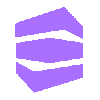How to Start Using Contentstack
Contentstack is a powerful headless CMS that enables teams to build, manage, and deliver digital experiences with speed and flexibility. Whether you're a developer, marketer, or content creator, this guide will help you get started with Contentstack in just a few steps.
Let’s check out the set of steps you need to perform to get started.
Step 1 - Get Access to Contentstack
To start using Contentstack, you need to have an account. To request a demo or ask for your free trial, you can either Contact Us or reach out to our Support team.
Step 2 - Understand the Basics
Get familiar with Contentstack’s core elements:
- Organization: Your workspace to manage multiple projects or teams.
- Stacks: Containers holding your content, assets, and settings.
- Content Types: Define how content is structured.
- Entries: Individual pieces of content, based on content types.
- Assets: Images, videos, and documents used across your projects.
For a better understanding of how Contentstack is structured, refer to the Key Concepts document.
Step 3 - Quickstart Guide
Follow our easy-to-use Quickstart in 5 mins guide to:
- Set up your organization.
- Create your first stack.
- Model and structure your content.
- Publish your first entry.
Step 4 - Explore Powerful Features
Once you're comfortable with the basics, explore Contentstack’s additional features that enhance content management:
- Modular Blocks: Modular Blocks is a field that allows content managers to dynamically create and modify components of a page or app on the go.
- Variants: Create different versions of the same content entry for use in localization, testing, or special content variations. This helps streamline your content workflows and maintain consistency across languages and formats.
- Taxonomy: Categorize pieces of content within your stack to facilitate easy navigation, search, and retrieval of information. You can hierarchically organize your web properties based on your requirements, such as their purpose, target audience, or any other aspects of your business.
- Live Preview: Preview content in real-time without publishing it to an environment or saving the changes made to the content.
- Visual Builder: With an intuitive WYSIWYG (What You See Is What You Get) interface, you can create, manage, and customize web pages in real-time.
- Timeline: Preview your site's appearance with scheduled updates, providing a comprehensive view of upcoming content transformations without the need to pre-schedule.
- UI Locations: An application in Contentstack can contain one or more UI locations (Dashboard Location, Sidebar Location, Custom Field Location, etc.), where you can embed custom elements to extend functionality, integrate third-party tools, or enhance the user experience.
- Stack Tokens: Contentstack provides three types of tokens—Management, Delivery, and Preview—to facilitate secure access to your content:
- Management Tokens grant read-write access to both published and unpublished (draft) content, enabling authorized use of the Content Management APIs.
- Delivery Tokens are used to fetch only published content via the Content Delivery APIs, ideal for production environments.
- Preview Tokens allow access to both published and draft content through the Preview APIs, making them suitable for staging and pre-release testing scenarios.
- Webhooks: Webhooks are HTTP callbacks that send notifications (with real-time information) to a specific URI when triggered by events. Contentstack’s Automate lets you extend webhook capabilities by integrating with connectors like Slack, AWS S3, and Azure Blob.
- Workflows: Streamline content creation, review, approval, and publishing processes with customizable workflows and conditional approval rules.
- Localization: Add multiple languages to your stack and manage multilingual content effectively.
- Data Synchronization: Sync content between Contentstack and your local server, database, or device using DataSync or Sync APIs.
Step 5 - Leverage Advanced Developer Tools
Contentstack supports developers with powerful tools and integrations:
- REST API and GraphQL API: Perform operations on your content or retrieve customized and nested content efficiently.
- Platform-specific SDKs: Use SDKs, API references, and sample apps to build integrations and fetch content from Contentstack.
- Developer Hub App Boilerplates: Contentstack’s Developer Hub offers boilerplates (Generic App Boilerplate, eCommerce Boilerplate, DAM Boilerplate) to accelerate custom app development.
- Personalize: Tailor content for different audience segments across platforms using flexible personalization rules.
- Brand Kit: Centralize and manage brand guidelines and communication styles.
- Launch: Instantly deploy websites built on Contentstack CMS via a GitHub-connected front-end hosting platform.
- Analytics: Monitor and analyze the usage and performance of Contentstack products within your organization.
